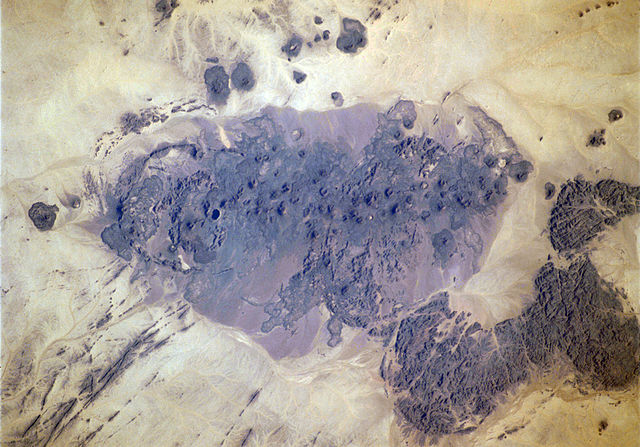Top Qs
Timeline
Chat
Perspective
Trachybasalt
Volcanic rock From Wikipedia, the free encyclopedia
Remove ads
Trachybasalt is a volcanic rock with a composition between trachyte and basalt. It resembles basalt but has a high content of alkali metal oxides. Minerals in trachybasalt include alkali feldspar, calcic plagioclase, olivine, clinopyroxene and likely very small amounts of leucite or analcime.[2]


Remove ads
Description

An aphanitic (fine-grained) igneous rock is classified as trachybasalt when it has a silica content of about 49% and a total alkali metal oxide content of about 6%. This places trachybasalt in the S1 field of the TAS diagram. Trachybasalt is further divided into sodium-rich hawaiite and potassium-rich potassic trachybasalt, with wt% Na2O > K2O + 2 for hawaiite.[3][4][5] The intrusive equivalent of trachybasalt is monzonite.[6]
Trachybasalt is not defined on the QAPF diagram, which classifies crystalline igneous rock by its relative content of feldspars and quartz.[3][4][5] However, the U.S. Geological Survey defines trachybasalt as a mafic volcanic rock (composed of over 35% mafic minerals) in which the quartz-feldspar-feldspathoid fraction of the rock is less than 20% quartz and less than 10% feldspathoid, and in which plagioclase is between 65% and 90% of the total feldspar content.[7]
Remove ads
Occurrence
Trachybasalt is common in continental volcanism and is also found on some ocean islands.[8] It is abundant at Mount Etna[9] and at Mount Taylor (New Mexico).[10] It has also been found on Gale crater on the planet Mars.[11]
References
Wikiwand - on
Seamless Wikipedia browsing. On steroids.
Remove ads
